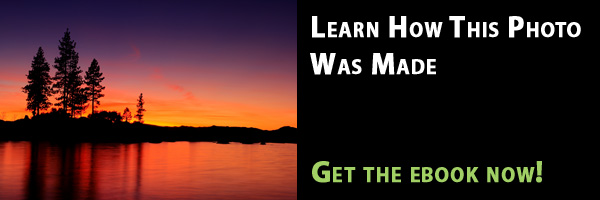
Have you ever taken two shots a few yards apart and been amazed at how different they looked? That slight difference in perspective is multiplied exponentially in aerial photography.
For example, look at these two photos of Kauai’s Na Pali coast:


This is the same stretch of coastline at about the same time of day, but what a difference 500 feet in altitude can make! Not only that, but there are some incredible locations that can only be photographed from the air.
The primary challenge of aerial photography is that it requires different techniques than we normally use. Even experienced photographers are often disappointed with the results of their initial flights. I certainly wasn’t any different. It took a lot of research plus trial and error before I could produce quality images. Below I’d like to share five critical tips that will help make your next aerial photography experience a productive one:
#1 – Plan, Plan, Plan
Like any type of photography, the more planning you do, the more likely it is that you’ll have a productive shoot. Before booking a flight or a tour, check out the tour’s website first. Then review them on Trip Advisor and similar sites to see what previous customers thought (frankly, some places simply don’t have many sights worth photographing, or at least not enough to justify the cost of a flight).
Look at Google Earth and Flickr to find out what sights/locations are in the area. Finally, remember that most pilots have flown with photographers before and are glad to share their expertise—don’t hesitate to take advantage of their input as well.
#2 – No Windows
The best way to photograph from an aircraft is through an open window. Windows create reflections that you might not notice in the air, but they are painfully obvious later when reviewing images on your monitor. Windows also desaturate colors, reduce contrast and often add a blue/green color cast.
TIP: Many small planes and helicopters have removable doors. If you ask around, you will likely find a tour that offers this option. This is the perfect platform for aerial photography and it also makes for an incredibly fun experience!
#3 – Shoot Fast, Shoot Often!
Set your camera on Shutter Priority and select 1/750th of a second. This will help “freeze” your shots despite your aircraft’s speed and vibrations.
If your camera has a “burst mode,” then use it. Take multiple shots of the same subject. This will help if a propeller blade shows up in some frames or if your autofocus doesn’t nail every shot.
#4 – Shoot Wide and Crop Later
When I’m taking a landscape shot, I’ll often spend two or three minutes to make sure everything is perfectly composed, level and focused. Unfortunately, you won’t have this luxury in the air. You are paying big bucks for every minute and you want to make the most of every one of them.
#5 – Take the Right Lens
Zoom lenses are the perfect choice. You don’t want to try changing lenses in the cockpit (some pilots won’t even allow it). Besides, the ability to zoom is critical to maximizing your productivity. You won’t need a long zoom, I have found that most of my shots are taken between 28-130mm on a full frame camera (18mm-84mm on cropped APS-C sensor). Besides long zooms tend to be much more susceptible to vibration.
Hopefully this brief article will perk your interest in aerial photography. If you decide to give it a try, you might be interested in a much more detailed article I’ve written at: http://www.firefallphotography.com/aerial-photography-tips-guide/
Enjoy your flight!
Get more great tips in our free weekly newsletter.
 About the Author: Jeff Stamer got his first camera, a secondhand Kodak Brownie back in 1964. A lot has certainly changed since then, but he will tell you that love of photography hasn’t been one of them. After a 30 year interlude with an international Fortune 500 corporation, Jeff returned to full-time wildlife and landscape photography in 2010. He has since been making up for those lost decades with a vengeance. Jeff writes a regular photography blog and maintains a well-respected website at: http://www.firefallphotography.com/
About the Author: Jeff Stamer got his first camera, a secondhand Kodak Brownie back in 1964. A lot has certainly changed since then, but he will tell you that love of photography hasn’t been one of them. After a 30 year interlude with an international Fortune 500 corporation, Jeff returned to full-time wildlife and landscape photography in 2010. He has since been making up for those lost decades with a vengeance. Jeff writes a regular photography blog and maintains a well-respected website at: http://www.firefallphotography.com/

I like what you said about shooting wide and cropping later. It definitely seems like you wouldn’t have much time to get things perfect in the air. My wife and I are thinking about getting a drone, and we’ll keep these tips in mind! Thanks!
great article! taking pictures from the window is a great tip, never thought about that particularly. surely going to do it on my next trip. selecting a camera is a critical part, as they come with the different lens for different work. As a beginner we cant stress out more on creating an online portfolio, it will help us to expand our audience and getting more recognition. have done it through Pixpa cause it’s simple and easy.
thanxx